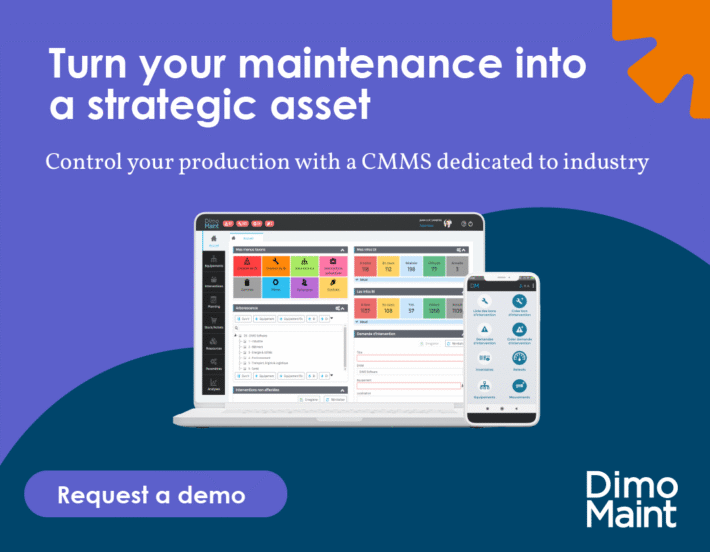The industrial sector, and process industries in particular, must tightly control their production flows and be responsive to unforeseen events. ERP systems, as well as forecasting and planning software and MES (Manufacturing Execution System) systems, all contribute to this control. These solutions allow production management, demand forecasting, inventory optimization and compliance assurance. But to form a complete industrial ecosystem, they must be able to communicate with each other and with the CMMS of the company.
The challenges of integration between production and management tools
At present, every digital tool deployed on the shop floor is part of a broader information chain. The first of these, the ERP, gives manufacturers visibility over the planning of their resources, their finances, their inventories and their human resources. Complementary, the MES supervises the real-time execution of production processes. However, without integrating these systems with the company’s maintenance software, all data related to assets, maintenance and machine availability remain isolated, and their benefits are limited. Often, the lack of communication reduces responsiveness and creates harmful inconsistencies.
For manufacturers, the challenge is therefore to link these software building blocks together: the reward is continuous data sharing between production and maintenance. Adjustments and interventions are then carried out more intelligently, without interruption of flow. Interconnection means smoother processes and, very often, cost savings.
Why ERP alone is no longer enough in a complex industrial environment?
The ERP has long been considered the heart of the industrial information system. But as the complexity of production lines increases, the enterprise resource planning software is no longer sufficient on its own to guarantee a complete, real-time view of activity. In a context where product lifecycles are shortening and demand evolves rapidly, manufacturers must ensure responsiveness by integrating complementary solutions.
The MES, capable of collecting operational data from the workshops, takes over here. From overall equipment effectiveness to quality levels, incidents and machine performances, MES information, updated continuously, allows industrial strategy to be adjusted with always-accurate data.
Finally, the CMMS, when it connects to these tools, multiplies the level of information regarding the health status of assets. Not only do the software’s data contribute to a full understanding of the machines, but they also make it possible to anticipate failures precisely, and therefore to maintain an optimal level of availability.
Focus on the specific characteristics of process industries
Process industries (food, chemical, pharmaceutical, cosmetics…) are distinguished by the necessary continuity of their flows and the transformation of raw materials into finished products. Another particularity of these industries is the need to cope with strong constraints of traceability, safety and quality so as not to compromise any production batch.
Under these conditions, no manufacturer in the sector can hope to control production without interconnecting its ERP, MES and CMMS solutions. Together, the three solutions will make it possible to know the true availability of assets and, above all, to intelligently schedule preventive maintenance so as not to interrupt production. It should be noted that this integration also promotes traceability, each stage of manufacturing being thus associated with the state of the equipment used.
ERP, MES and CMMS: an interconnection serving performance
DimoMaint supports manufacturers in the deployment of a CMMS capable of communicating with the ERP and MES already in place. This interconnection makes it possible to synchronize key production data (work orders, stock levels, purchase histories and intervention schedules) and to derive a more complete view of operations: maintenance is thus carried out in harmony with industrial performance, without slowing it down.
As illustrated by the case of VIF, client and partner of DimoMaint, CMMS innovations make it possible to resolve incidents faster—ongoing or anticipated. An interconnected CMMS alerts in case of anomalies, enables the automation of maintenance order creation from events detected by the MES, or informs the ERP of the actual costs of interventions. A bidirectional flow of information is thus established that secures decisions, ensures very limited production stoppages and allows, ultimately, better budget control.
By integrating the CMMS into the industrial information system, manufacturers align their maintenance activities with production strategy and benefit on both fronts.
